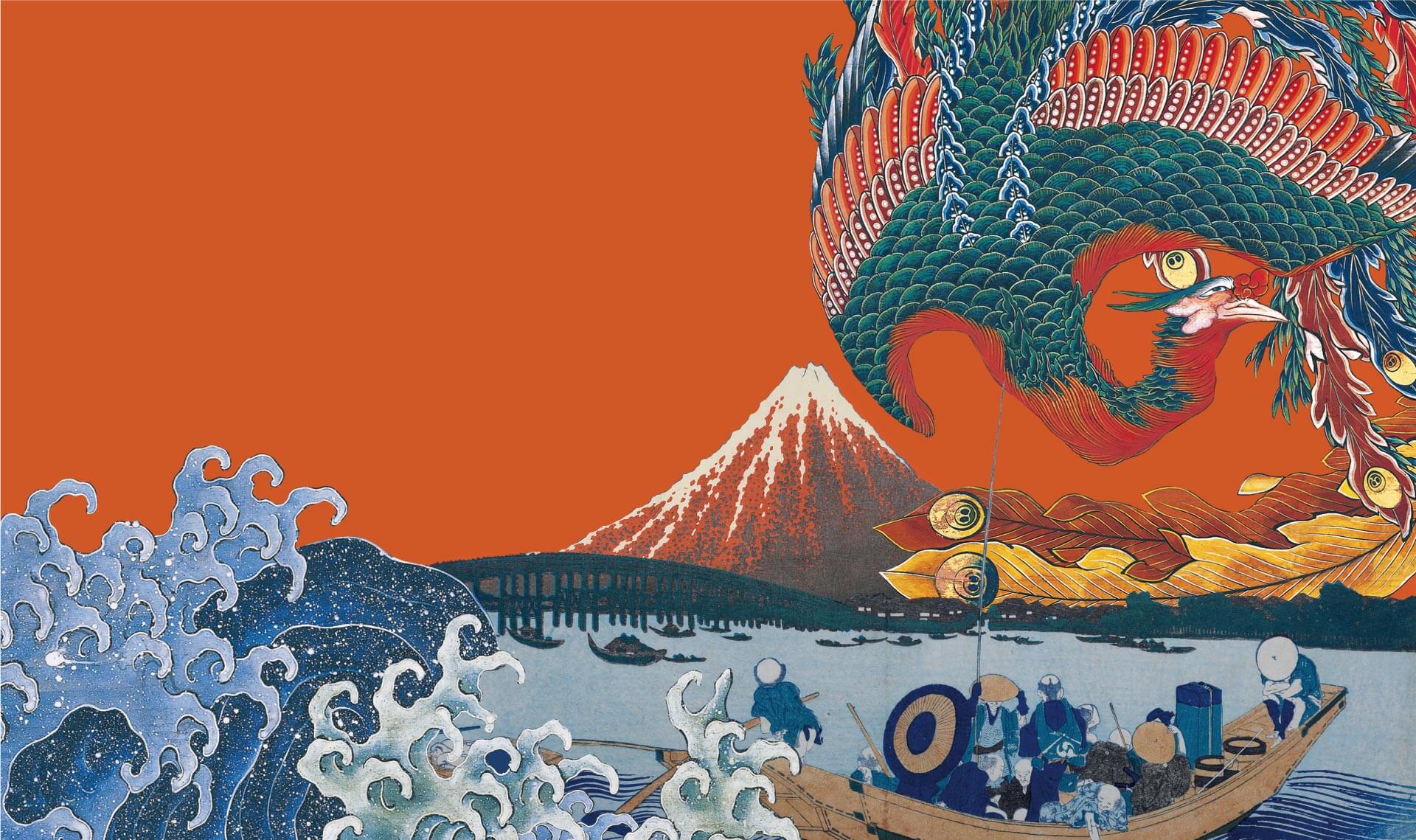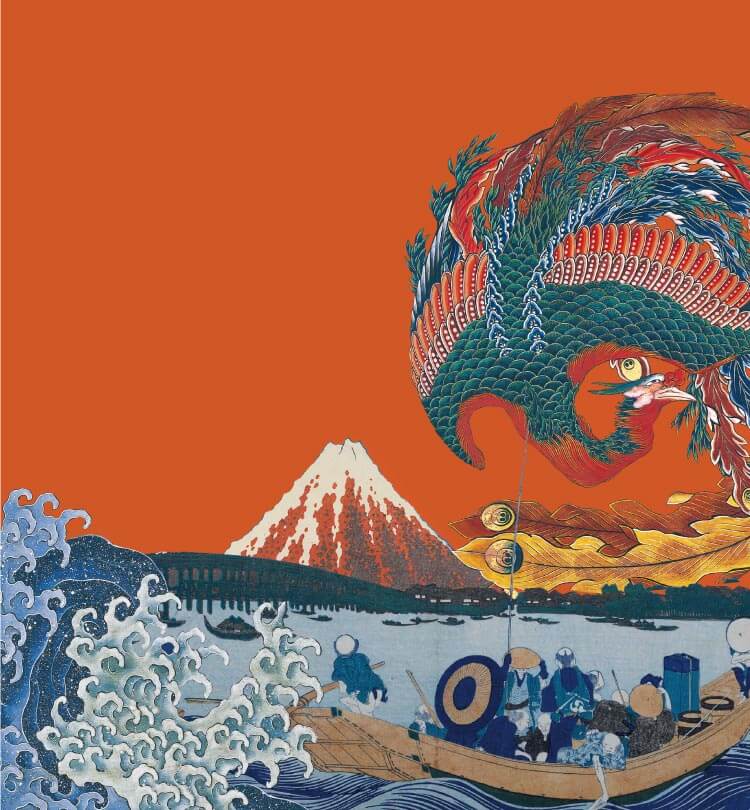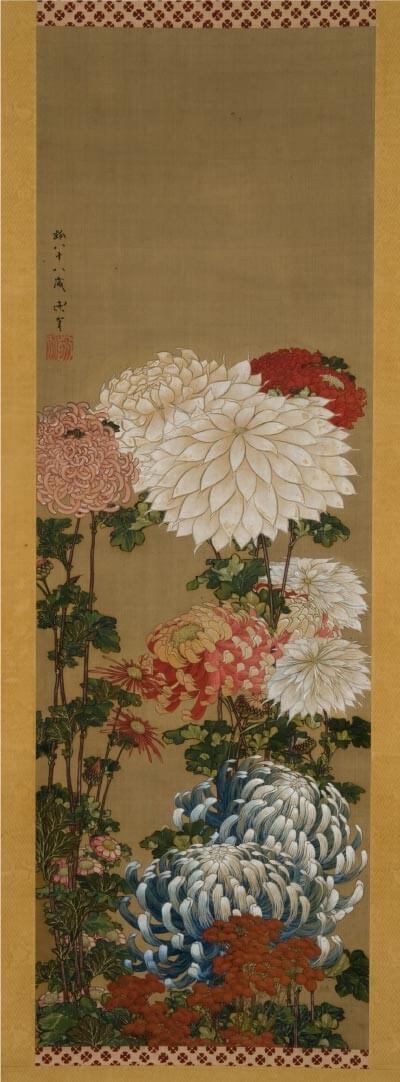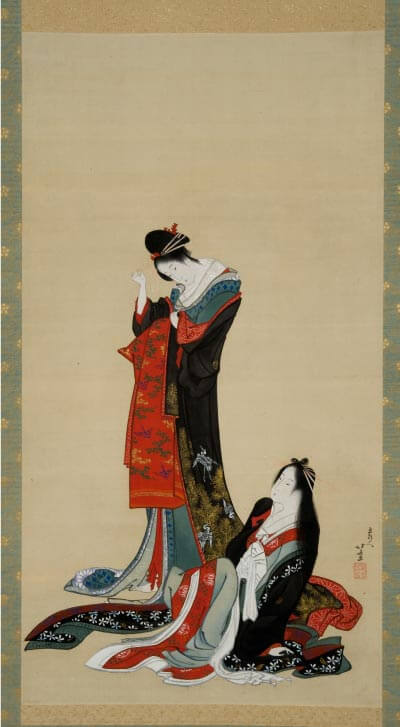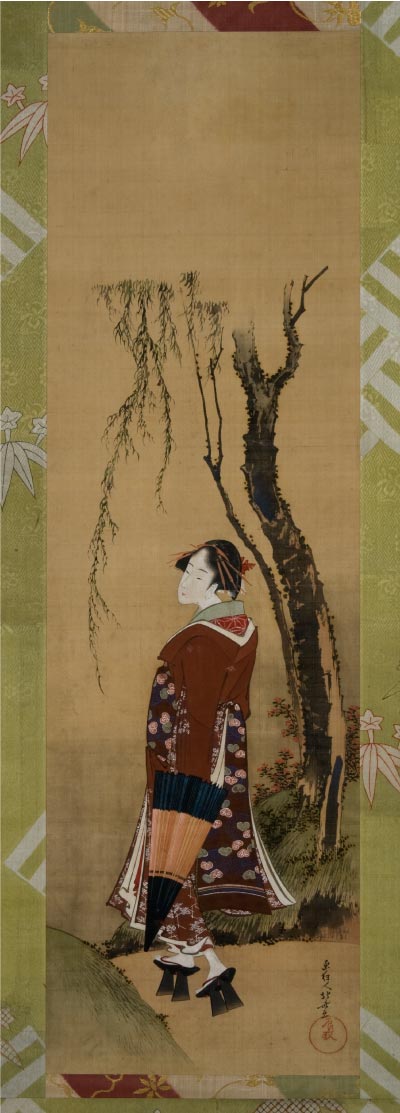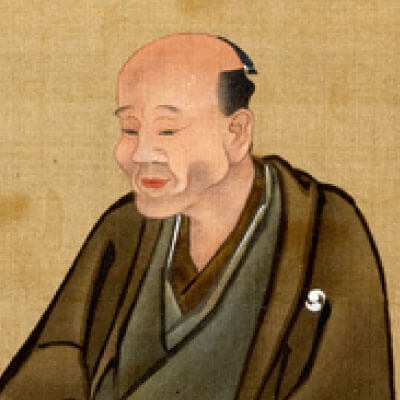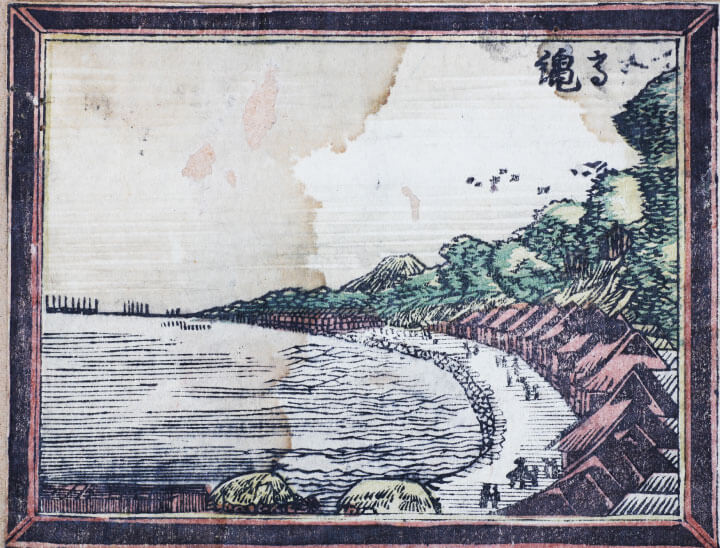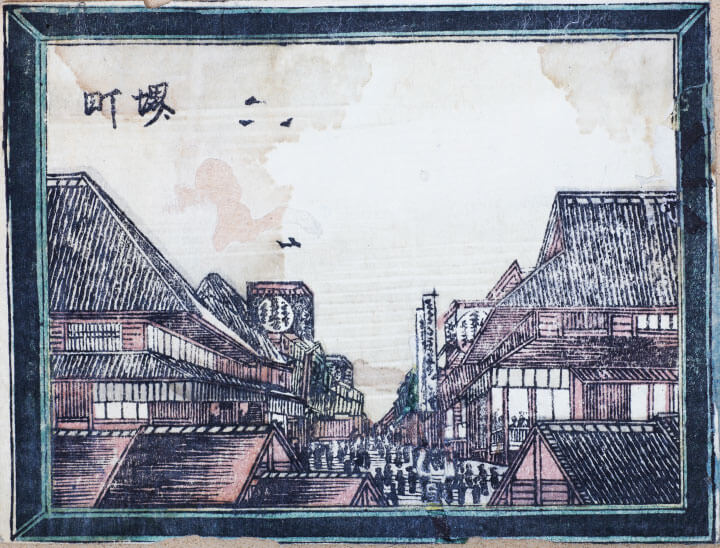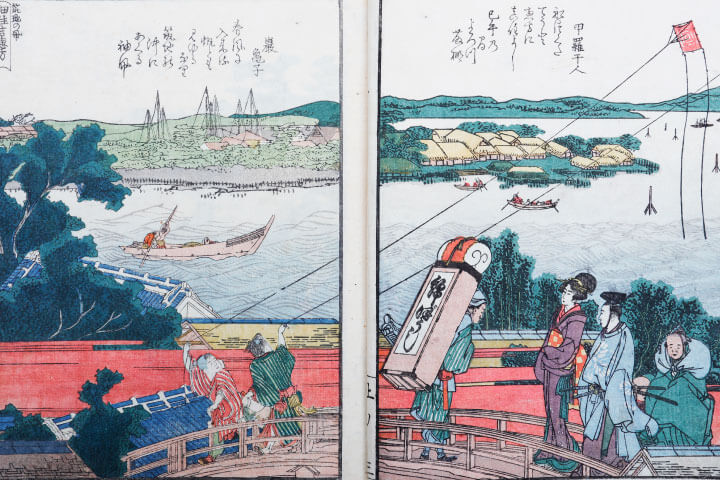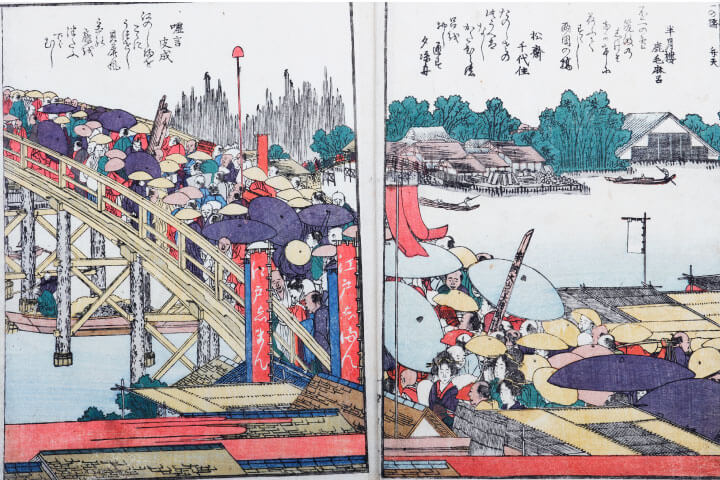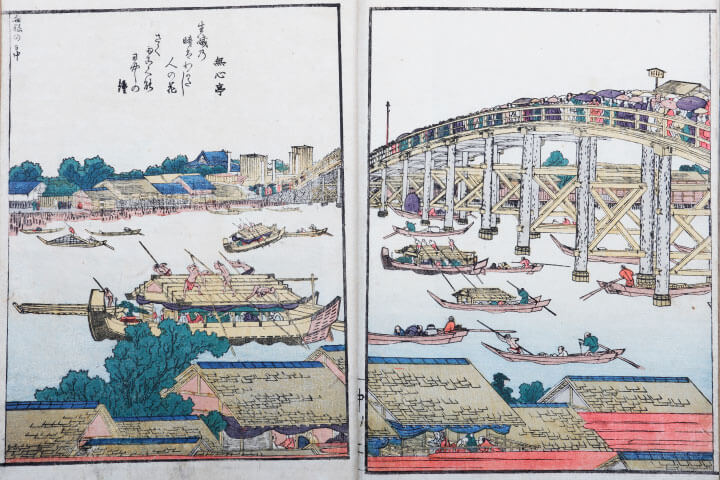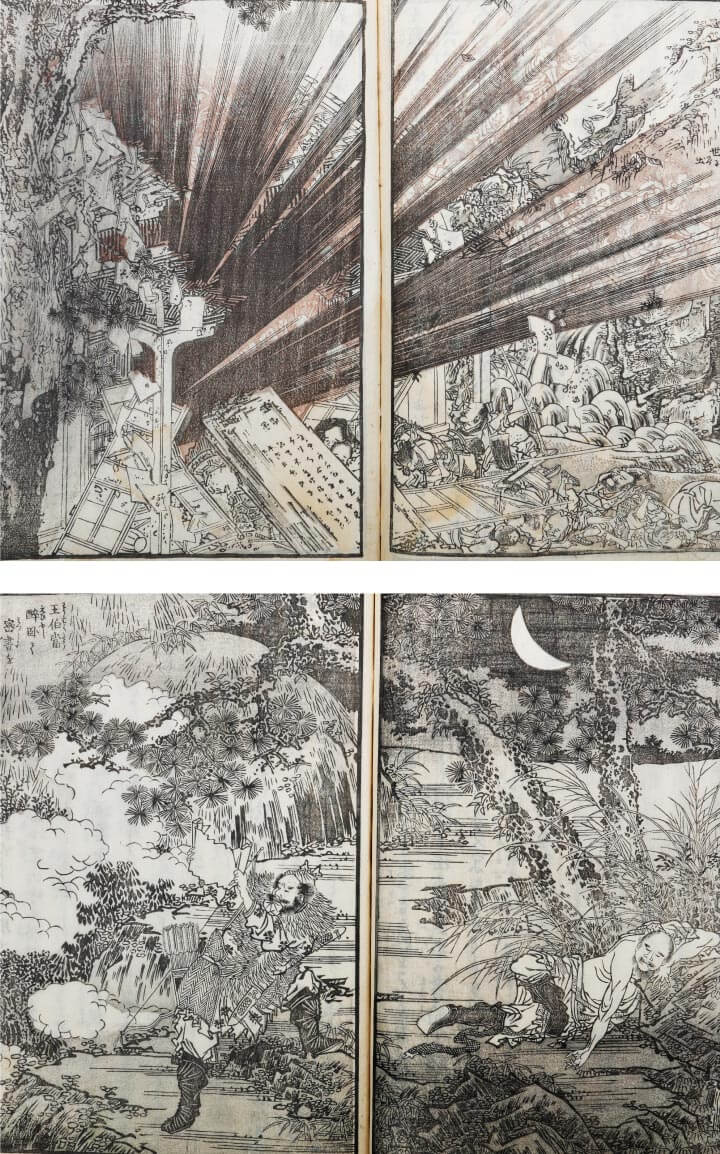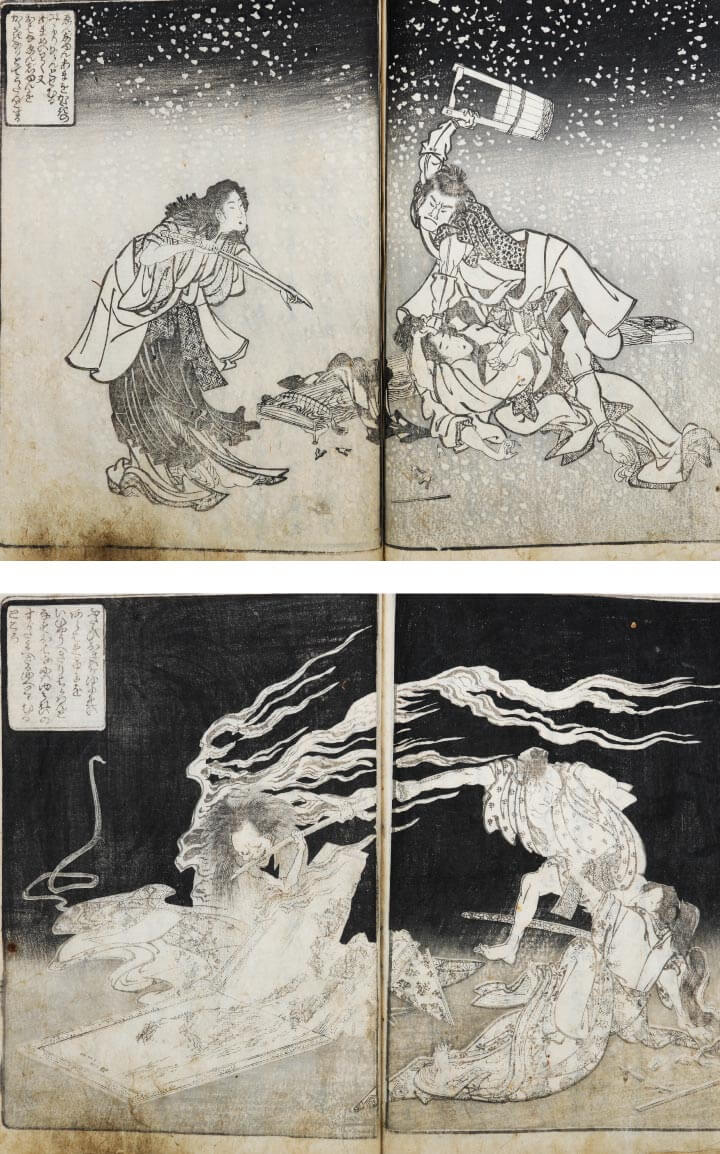2020年9月5日(土)→11月15日(日)
5 September (Sat) - 15 November (Sun) 2020
概要Overview
この展覧会は、北斎作品の造形のところどころに見られる特色、現実離れしているが違和感を感じさせない視覚的演出、〝視覚のマジック〞を探っていく展覧会です。
葛飾北斎は宝暦十年(1760)、現在の東京都墨田区にあった本所割下水に生まれました。十九歳で当時の人気浮世絵師、勝川春章に弟子入りすると、師にその腕前を認められ、瞬く間に役者絵師としてデビューを果たしました。
しばらくして師匠の死に伴い、兄弟子たちとの不和などにより勝川派を出た北斎は、寛政六年(1794)、江戸で活躍した上方絵師、俵屋宗達の画号を襲名し、翌年には宗理の名で絵暦などを発表しました。この頃描いていた美人画は、「宗理型美人」と呼ばれています。
今回展示する肉筆画「柳下傘持美人」はその典型的な作品で、当時北斎が得意としていた、目鼻が小さく瓜実顔をした若い娘を描いたものです。同じ時期に発表された絵本『隅田川両岸一覧』にも、特徴高いほっそりとした女性たちが多く描かれています。
その後わずか三年ほどで宗理の名を門人に譲り、北斎と画号を改めると、それまで見られなかった西洋風の作品などを手掛けるようになります。「阿蘭陀画鏡」シリーズもその一つで、まるで西洋画を意識し、額縁をデザインしたかのような作品からは、銅版画とも錯覚するほどです。
葛飾北斎を名乗る40代半ばになると、北斎は読本の世界に携わるようになります。当時大人気作家だった曲亭馬琴と組み、読本の挿絵を手掛けるなどし、北斎の評判はうなぎのぼりに上がっていきました。臨場感にあふれた作風は、物語の世界に引き込まれるような感覚にさせてくれます。まさに視覚のマジックと言えるでしょう。
-

菊(左)
-

菊(右)
今回展示する『椿説弓張月』や『霜夜星』、『新編水滸画伝』は北斎の挿絵作品を代表するものと言えます。
文化七年(1810)頃に名乗っていた戴斗から、文政三年(1820)頃に使っていた為一の頃にかけて、北斎はさらに様々な版本作品に携わるようになります。文化十一年(1814)に発表された『北斎漫画』は、明治期まで続く大ヒットとなり、また、天保二年(1831)には、今や誰もが知る「冨嶽三十六景」を出版、浮世絵界にそれまであまり見られなかった「風景画」を確立させると、それに続くように各地の滝や、橋の名所を描いた「諸国瀧廻り」、「諸國名橋竒覧」などの錦絵を発表し、新しい風を吹き入れました。
晩年になると、北斎は浮世絵版画の世界から離れ、肉筆画を描くことに没頭するようになります。
亡くなる九十歳までの最晩年に使っていた画号、画狂老人卍を名乗る頃、北斎は信州小布施へ数回旅をし、小布施の祭屋台天井絵「龍」、「鳳凰」、「男浪」、「女浪」を描きました。それまであまり描かなかった、現実にはない空想の世界を描いた作品からは、北斎の卓越した視覚、想像力をうかがうことができます。亡くなる直前、北斎は「天があと5年の命を私にくれたなら、真正の画工になっただろう」といい、浅草聖天町の仮宅で没したといいます。
最後の最後まで絵を描くことに命を注いだ北斎。彼の指先からあふれ出たマジカルな作品の数々をどうぞお楽しみください。
-

二美人
-

柳下傘持美人
- English
-
The Visual Magic of Hokusai
Introduction
Thank you for visiting The Visual Magic of Hokusai, an exploration of the distinctively “magical” visual flourishes seen throughout Hokusai’s work that—although detached from reality—manage to seem not out of place.
Katsushika Hokusai was born in 1760 in the Honjo Warigesui area of Edo, part of what is now Sumida-ku in Tokyo. At the age of nineteen he became a disciple of Katsukawa Shunshō, a popular ukiyo-e artist at the time. His master recognized his talents and Hokusai soon debuted as a producer of “actor prints.”
After leaving the Katsukawa school in the wake of his master’s death due to a falling out with the older disciples, in 1794 Hokusai adopted the art name of Tawaraya Sōri, a Kansai-area painter who had been active in Edo, and issued picture calendars and other works under the Sōri name the following year. The beauties he painted during this period came to be known as “Sōri beauties.” The young woman with delicate features and an oval face in Beauty with Umbrella Beneath a Willow Tree, included in this exhibition, is a classic example. Many such distinctively slender women are also depicted in the picture book Both Banks of the Sumida River at a Glance, published during the same period.
After only about three years he transferred the art name Sōri to a disciple, changed his own art name to Hokusai, and began for the first time to produce works influenced by Western art. The prints in one such series, Eight Views of Edo in the Dutch Style, incorporate borders like the frames surrounding Western paintings and could almost be mistaken for copperplate engravings.
In his late forties, now signing his work Katsushika Hokusai, he got involved in the world of yomihon “books for reading.” Hokusai’s illustrations in partnership with the popular author Kyokutei Bakin earned him growing renown. His dynamic imagery drew readers into the world of the narrative—truly a kind of visual magic. Featured in this exhibition, Stars on a Frosty Night and An Illustrated New Edition of The Water Margin are representative of Hokusai’s work in yomihon illustrations.
From the period beginning around 1810 when he used the art name Taito and into the period beginning around 1820 when he used the art name Iitsu, Hokusai expanded the range of his work to various kinds of printed books. The multivolume Random Drawings by Hokusai, which began publication in 1814, became an enormous hit that continued even into the Meiji Period. The well-known Thirty-Six Views of Mount Fuji series began publication in 1831 and established the landscape as a new genre in the world of ukiyo-e prints. Hokusai continued to breathe new life into multicolor nishiki-e with series that depicted famous sites, including A Tour of Waterfalls in Various Provinces and Unusual Views of Famous Bridges in Various Provinces.
Later in life, Hokusai moved away from the world of ukiyo-e prints and devoted his energies to painting. During the final years before he passed away at the age of 90, when he was using the art name Gakyō Rōjin Manji (“Manji, the old man mad for painting”), Hokusai traveled to Obuse a number of times and produced four festival cart ceiling panel paintings: Dragon, Phoenix, Masculine Waves, and Feminine Waves. Works of this period that take up the fantastic and imaginary convey a sense of Hokusai’s transcendent visual creativity. Just before Hokusai passed away at his temporary lodgings in Asakusa Shōten-chō he said, “If only the heavens had granted me five more years, I might have become a true artist.”
Hokusai poured his life into his painting until the very end. We hope you enjoy this exploration of the magical works he conjured with his brush.
信州小布施 北斎館Hokusai Museum,Obuse
長野県上高井郡小布施町大字小布施485
485 Obuse, Obuse-machi, Kamitakai-gun, Nagano-ken 381-0201
TEL: 026-247-5206 FAX: 026-247-6188
開館時間/Hours |
午前9時~午後5時(ご入館は午後4時30分まで) |
|---|---|
入館料/Admission |
大人1,000円/高校生500円/小中学生300円 |
駐車場/Parking |
北斎館駐車場(北斎館に隣接) |
アクセス/Access |
●電車ご利用の場合 ●車でお越しの場合 ●By train ●By car |

